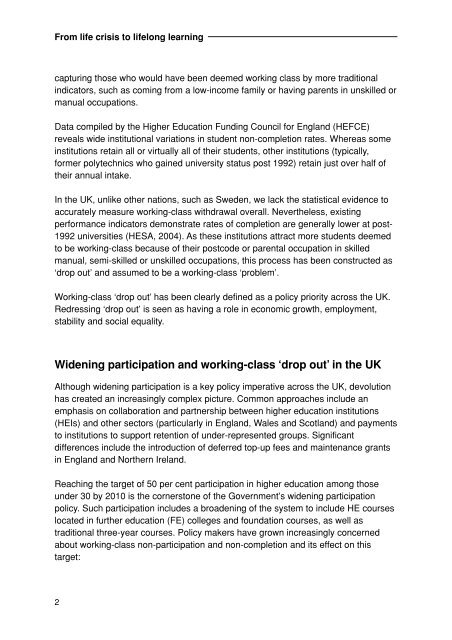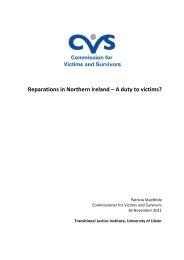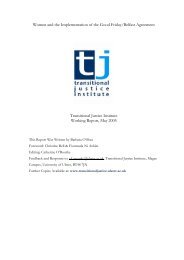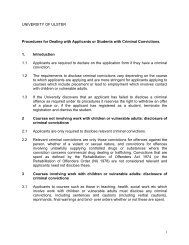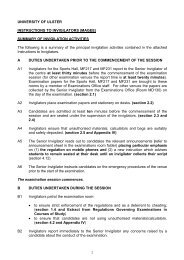From life crisis to lifelong learning: Rethinking working-class 'drop out'
From life crisis to lifelong learning: Rethinking working-class 'drop out'
From life crisis to lifelong learning: Rethinking working-class 'drop out'
You also want an ePaper? Increase the reach of your titles
YUMPU automatically turns print PDFs into web optimized ePapers that Google loves.
<strong>From</strong> <strong>life</strong> <strong>crisis</strong> <strong>to</strong> <strong>life</strong>long <strong>learning</strong><br />
capturing those who would have been deemed <strong>working</strong> <strong>class</strong> by more traditional<br />
indica<strong>to</strong>rs, such as coming from a low-income family or having parents in unskilled or<br />
manual occupations.<br />
Data compiled by the Higher Education Funding Council for England (HEFCE)<br />
reveals wide institutional variations in student non-completion rates. Whereas some<br />
institutions retain all or virtually all of their students, other institutions (typically,<br />
former polytechnics who gained university status post 1992) retain just over half of<br />
their annual intake.<br />
In the UK, unlike other nations, such as Sweden, we lack the statistical evidence <strong>to</strong><br />
accurately measure <strong>working</strong>-<strong>class</strong> withdrawal overall. Nevertheless, existing<br />
performance indica<strong>to</strong>rs demonstrate rates of completion are generally lower at post-<br />
1992 universities (HESA, 2004). As these institutions attract more students deemed<br />
<strong>to</strong> be <strong>working</strong>-<strong>class</strong> because of their postcode or parental occupation in skilled<br />
manual, semi-skilled or unskilled occupations, this process has been constructed as<br />
‘drop out’ and assumed <strong>to</strong> be a <strong>working</strong>-<strong>class</strong> ‘problem’.<br />
Working-<strong>class</strong> ‘drop out’ has been clearly defined as a policy priority across the UK.<br />
Redressing ‘drop out’ is seen as having a role in economic growth, employment,<br />
stability and social equality.<br />
Widening participation and <strong>working</strong>-<strong>class</strong> ‘drop out’ in the UK<br />
Although widening participation is a key policy imperative across the UK, devolution<br />
has created an increasingly complex picture. Common approaches include an<br />
emphasis on collaboration and partnership between higher education institutions<br />
(HEIs) and other sec<strong>to</strong>rs (particularly in England, Wales and Scotland) and payments<br />
<strong>to</strong> institutions <strong>to</strong> support retention of under-represented groups. Significant<br />
differences include the introduction of deferred <strong>to</strong>p-up fees and maintenance grants<br />
in England and Northern Ireland.<br />
Reaching the target of 50 per cent participation in higher education among those<br />
under 30 by 2010 is the corners<strong>to</strong>ne of the Government’s widening participation<br />
policy. Such participation includes a broadening of the system <strong>to</strong> include HE courses<br />
located in further education (FE) colleges and foundation courses, as well as<br />
traditional three-year courses. Policy makers have grown increasingly concerned<br />
about <strong>working</strong>-<strong>class</strong> non-participation and non-completion and its effect on this<br />
target:<br />
2


